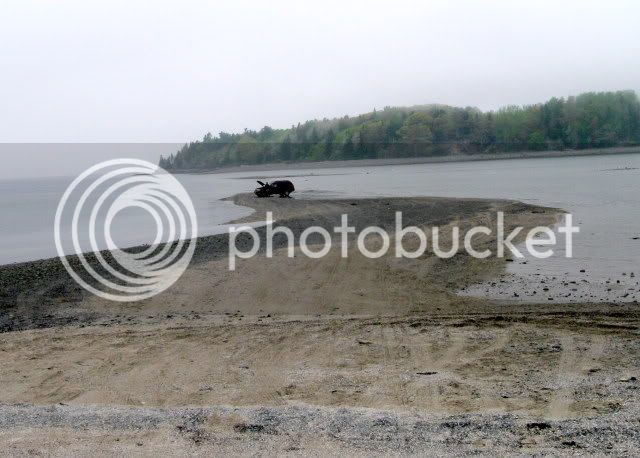Ed'n Lauky
Well-known member
- Joined
- Feb 15, 2007
- Messages
- 1,802
- Reaction score
- 168
My wife and I had a special treat as my employer gave us a weekend at Bar Harbor.
The fact that it was suggested that we take the trip during hurricane season didn’t faze us a bit.
Nevertheless, we decided to take the trip on Memorial Day weekend. My wife isn’t a hiker
so we drove up Cadillac Mt. but we decided to make an attempt on the summit of Bar Island.
The Island is connected to the mainland by a sand bar during low tide.

We started out and looked over at the majestic peak we would attempt.

The views were quite different from the typical White Mt. trail.

After a half mile crossing it was time for a rest.

We then headed off and up to the top of the island

Shortly before the summit the trail steepened. My wife, as she paused to catch her
breath, mumbled something about it being more difficult than Everest. I wasn’t sure
how she knew how difficult Everest was but let it go.

Finally we reached the summit. My GPS registered 131’

We spent some time at the view point then headed down]

There were no Gray Jays out today, but the Sea Gulls entertained us by picking up
shells and dropping them to the ground to break open the shells.

If you were wondering about the water crossings on this hike. I would suggest that you don't wait until the last minute before trying to start your car

My advice would also be not to take this hike during high tide unless you’re equipped with a kayak

Total miles 2
Total elevation gain about 150’
Zero black flies
The fact that it was suggested that we take the trip during hurricane season didn’t faze us a bit.
Nevertheless, we decided to take the trip on Memorial Day weekend. My wife isn’t a hiker
so we drove up Cadillac Mt. but we decided to make an attempt on the summit of Bar Island.
The Island is connected to the mainland by a sand bar during low tide.

We started out and looked over at the majestic peak we would attempt.

The views were quite different from the typical White Mt. trail.

After a half mile crossing it was time for a rest.

We then headed off and up to the top of the island

Shortly before the summit the trail steepened. My wife, as she paused to catch her
breath, mumbled something about it being more difficult than Everest. I wasn’t sure
how she knew how difficult Everest was but let it go.

Finally we reached the summit. My GPS registered 131’

We spent some time at the view point then headed down]

There were no Gray Jays out today, but the Sea Gulls entertained us by picking up
shells and dropping them to the ground to break open the shells.

If you were wondering about the water crossings on this hike. I would suggest that you don't wait until the last minute before trying to start your car

My advice would also be not to take this hike during high tide unless you’re equipped with a kayak

Total miles 2
Total elevation gain about 150’
Zero black flies
